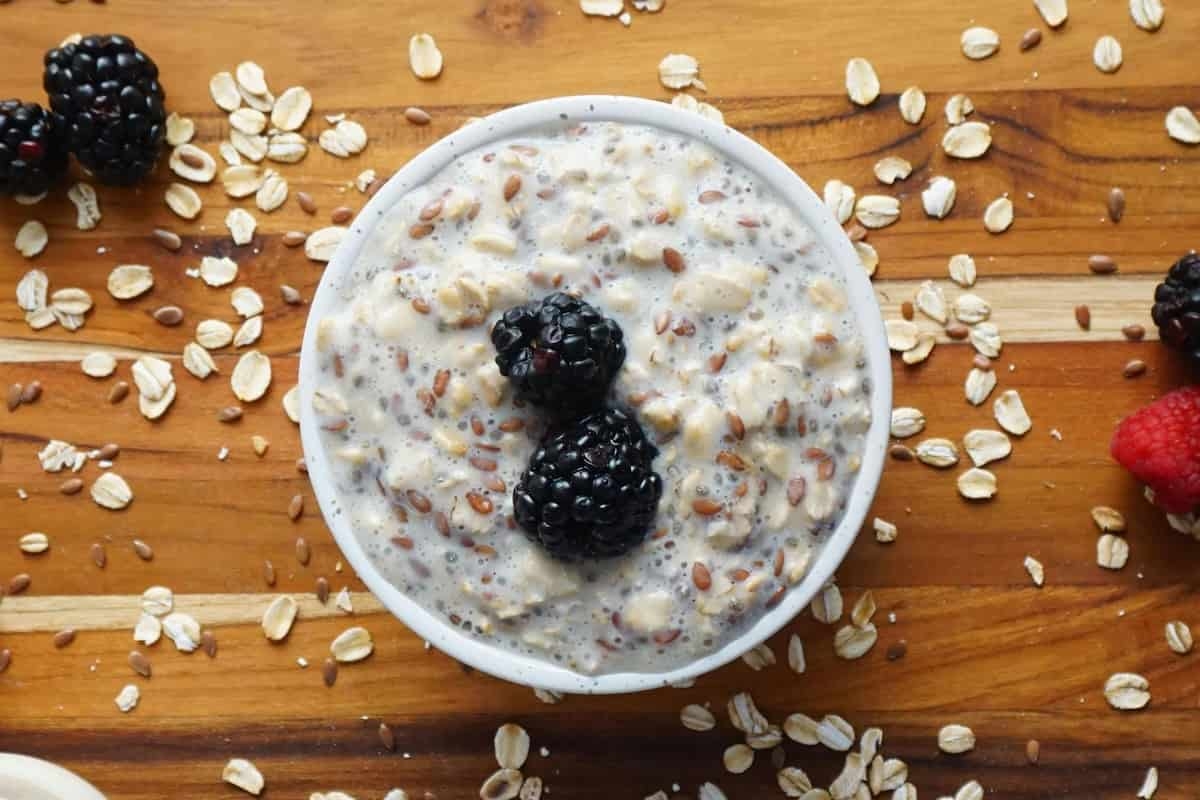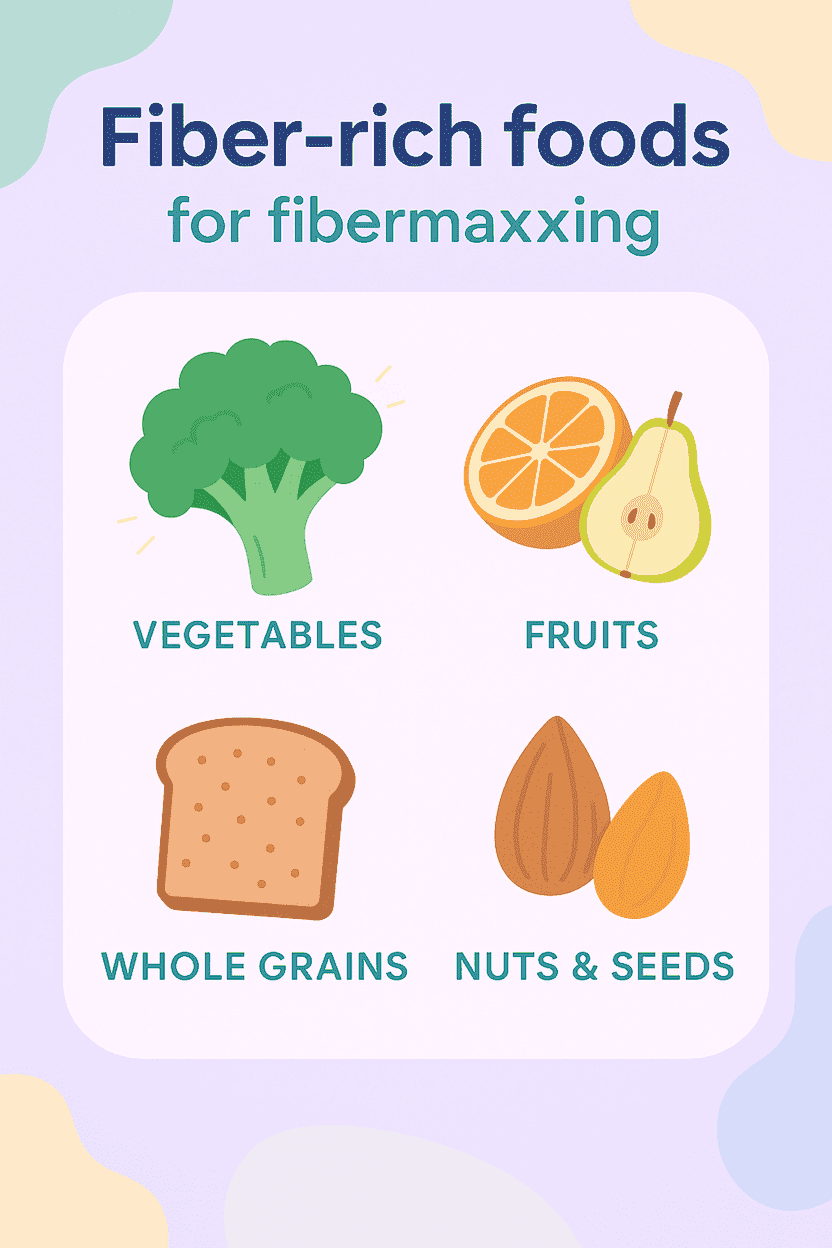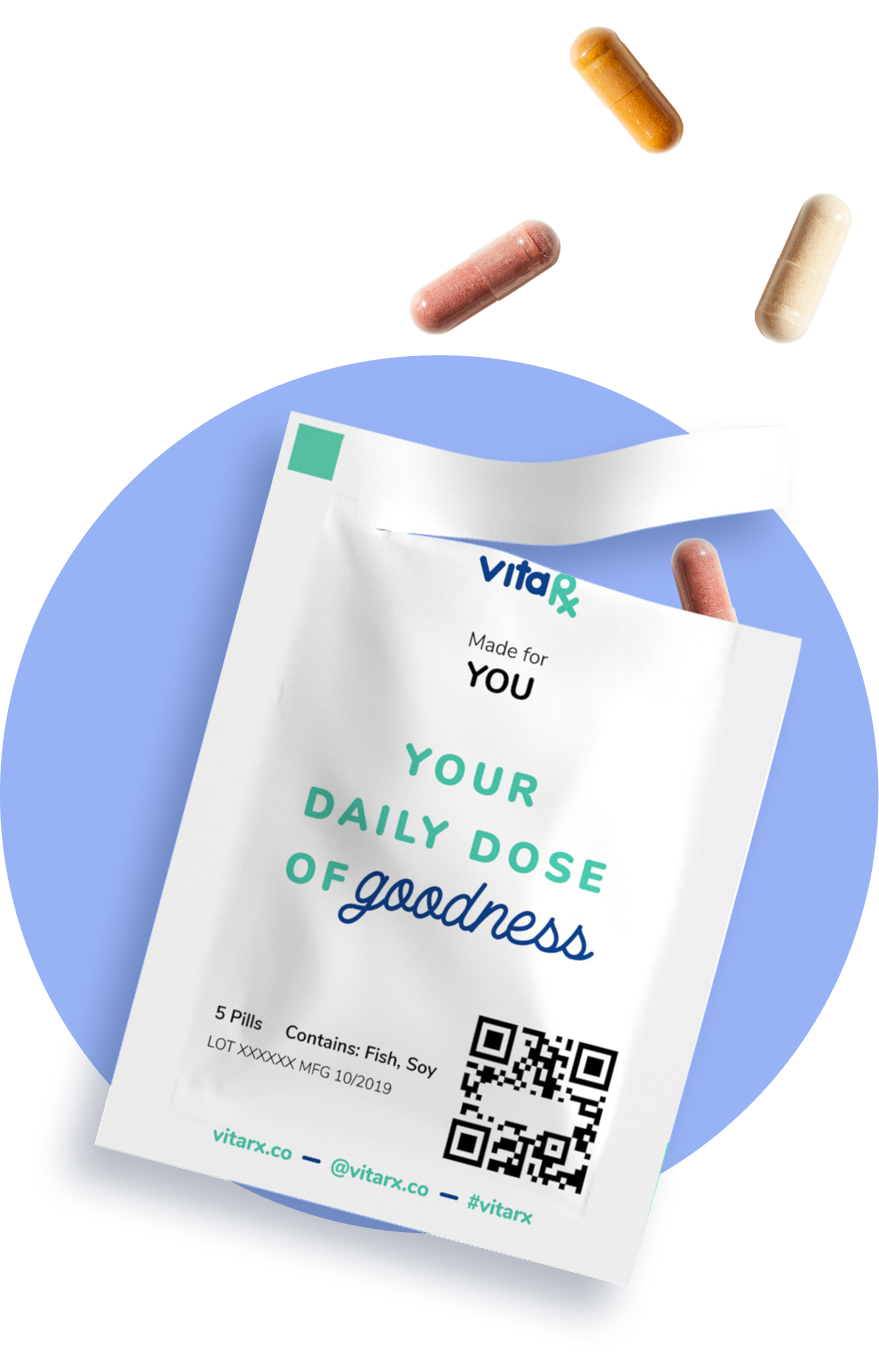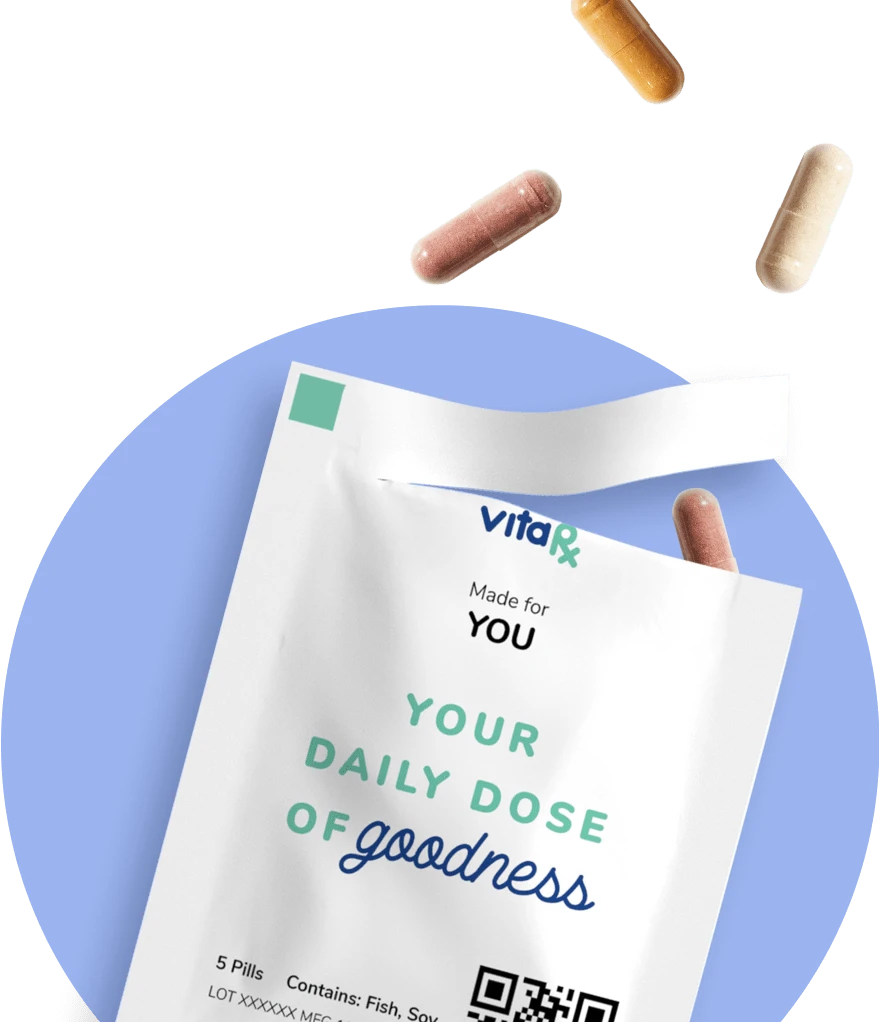Last update: November 6, 2025
4 minute read
What Is Fibermaxxing? And Should You Try It for Better Gut Health?
Discover what fibermaxxing really means and how you can safely boost your fiber intake for digestion, energy, and well-being.

By Derick Rodriguez, Associate Editor
Edited by Dr. Dimitar Marinov, MD, RDN, PhD

Ever wondered why so many people are suddenly talking about “fibermaxxing”? You’re not alone. Is it just another fleeting trend, or a clever nudge toward better gut health?
Let’s face it: most of us aren’t eating nearly enough fiber. This guide unpacks what the buzzword means, why it matters, and how you can embrace it without digestive drama.
Key takeaways
- Fibermaxxing means intentionally maximizing daily fiber intake, ideally through whole, plant-rich foods
- Balanced intake of soluble and insoluble fiber supports digestion, blood sugar, heart health, and satiety
- The secret is to start slow and stay hydrated; sudden increases can cause bloating, gas, or cramps
What is fibermaxxing?
Fibermaxxing is basically the internet’s way of saying “eat more fiber, and do it well.” It’s not a clinical term, but a social media trend that calls for maximizing daily fiber intake through plant-heavy meals and, if needed, supplements like psyllium husk.
Social media users often share fiber-rich recipes and ingredient ideas to help others include more fiber into their everyday meals.
A particularly helpful way to think about your needs: fiber recommendations are often given relative to your energy intake, typically 14 grams per 1,000 calories consumed. That works out to approximately 28 g per day on a 2,000-calorie diet.
Of course, general guidelines still apply:
- Women: aim for around 25–28 g of fiber daily
- Men: aim for around 31–38 g of fiber daily

Science-backed benefits
Researchers and dietitians confirm that fiber supports more than just digestion:
Benefit | How It Works |
|---|---|
Digestive Health & Regularity | Adds bulk and eases bowel movements (both through water and gut flora) |
Balanced Blood Sugar & Satiety | Slows glucose absorption; keeps you fuller longer |
Heart & Metabolic Health | Soluble fiber helps reduce LDL cholesterol and inflammation |
Gut Microbiome & Inflammation | Feeds beneficial bacteria, boosting gut-immune function and lowering inflammatory markers |
Long-Term Disease Prevention | Linked to reduced risks of type 2 diabetes, colorectal cancer, heart disease |
Is fibermaxxing safe?
Experts consistently affirm that fibermaxxing is one of the safer health trends out there, especially compared to restrictive diets or detox fads. It promotes nutrient-rich whole foods and a simple return to dietary basics.
But overdoing it has pitfalls:
- Digestive discomfort: Sudden intake spikes can cause bloating, gas, cramps, diarrhea, or constipation.
- Mineral malabsorption: Excessive fiber, especially from supplements, can reduce absorption of nutrients like iron, zinc, calcium.
- Nutrient displacement: Feeling overly full may backfire on consuming balanced nutrients.
- Risk for sensitive Individuals: Conditions like IBS, IBD, SIBO, or post-surgery may require tailored approaches.
— Dr. Dimitar Marinov, MD, RDN, PhDFibermaxxing is essentially a catchy term for something medicine has long recognized—most people don’t get enough dietary fiber, and gradually increasing intake brings real benefits for digestion, cardiovascular health, blood sugar balance, and the gut microbiome. When introduced slowly and paired with adequate hydration, a fiber-rich diet can improve regularity, satiety, and even lower long-term disease risk.
Best practices for safe fibermaxxing
- Start at your baseline: Most people are getting ~15 g/day.
- Increase gradually: Adding just 3–5 g every few days or weeks.
- Hydrate consistently: Fiber needs water to support digestion.
- Mix soluble and insoluble fibers for optimal functions.
- Emphasize whole food sources: Beans, fruits, veggies, grains, nuts, and seeds.
- Tune in to your body: Persistent discomfort means take a step back and consult a professional if necessary.
Fiber-rich foods to feature
Here are celebrated, fiber-dense foods to spotlight:
- Legumes: Lentils, chickpeas, black beans; about 6–9 g per serving.
- Whole Grains: Oats, quinoa, barley, bulgur, brown rice; excellent sources of both types of fiber.
- Vegetables: Artichokes, Brussels sprouts, broccoli, carrots; rich in insoluble fiber.
- Fruits: Berries, apples, pears, bananas, offering both soluble and insoluble fiber, plus vitamins.
- Nuts & Seeds: Chia seeds, flaxseed, almonds, pumpkin seeds; fantastic fiber bites.
VitaRx Tip
Adding just a tablespoon of chia to your oatmeal or a handful of berries to your yogurt can noticeably boost your daily fiber intake.
Frequently asked questions (FAQ)
Here are some of the most frequently asked questions about fibermaxxing.
Final thoughts
Fibermaxxing isn’t about extremes; it’s about a thoughtful, approachable return to eating fiber-first. When done gradually, with varied whole foods and plenty of water, it becomes a powerful, science-backed way to support your digestion, heart, mood, and metabolic health.
Start small, listen to your body, and let fiber become the foundation of well-being, not the last-minute hack. Small, consistent steps lead to lasting vitality.
Take our brief health quiz today to explore personalized supplement options that complement your fiber-forward lifestyle and elevate your well-being.
Sources and references
Editor

Derick Rodriguez
Derick Rodriguez focuses on editing health and wellness-related content. With over half a decade of experience in the digital realm, Derick has developed a unique skill set that bridges the gap between complex health concepts and accessible, user-friendly communication. His approach is deeply rooted in leveraging personal experiences and insights to illuminate the nuances of health and wellness topics, making them more approachable and empowering readers with knowledge and confidence.
Fact checker

Dr. Dimitar Marinov
Dr. Marinov has years of experience in scientific research and preventive and clinical medicine. His publications in peer-reviewed journals are on nutritional status, physical activity, and musculoskeletal disorders among adolescents.
At VitaRx, we're not just passionate about our work — we take immense pride in it. Our dedicated team of writers diligently follows strict editorial standards, ensuring that every piece of content we publish is accurate, current, and highly valuable. We don't just strive for quality; we aim for excellence.
Related posts
While you're at it, here are some other relevant articles you might be interested in.

Get your personalized vitamin recommendations in less than
5 minutes.
Get your personalized vitamin recommendations in less than
5 minutes.






